No place for dead: The truth behind Israeli razing of Gaza cemeteries and body theft
By Ivan Kesic
Beneath the staggering data on Israel's destruction of Palestinian cemeteries in the Gaza Strip and the theft of bodies—events often overshadowed by other harrowing statistics related to the ongoing genocide—lurks a chilling Zionist policy of 'necroviolence'.
A week ago, Gaza's Government Media Office (GMO) released a new report on Israeli genocidal crimes in the besieged territory, revealing horrific numbers of death and destruction.
The Israeli regime has committed 9,905 massacres in the Gaza Strip, including 7,160 attacks on Palestinian families, since the events of October 7, 2023.
The total number of martyrs and missing persons has reached 55,758, including 17,712 children, 12,136 women, and 5,444 martyrs from 1,410 Palestinian families who were completely wiped out.
The report also detailed the impact on the besieged Palestinian territory's medical sector, with 1,059 medical workers and 88 civil defense members martyred, 34 hospitals and 80 health centers shut down, and 162 health institutions and 135 ambulances targeted.
The Israeli occupation forces buried a large number of Palestinian victims inside hospitals, from which at least 520 bodies of martyrs were recovered while others remain under the rubble.
Total infrastructure damage in the Gaza Strip is estimated at 86 percent, including the destruction of 160,500 family homes and 212 shelters, estimated at a total of $37 billion.
Among the data often disregarded is that of 19 of 60 cemeteries in the territory that have been totally destroyed and 2,300 martyrs' bodies stolen, an increase from the 2,000 reported in August.
In November last year, after the Israeli warplanes rained bombs on a cemetery in Deir al-Balah, a Palestinian man took ti X, formerly Twitter, to give vent to his anger and frustration.
“Israel doesn't even want you to have the luxury of having your family visit your grave,” he wrote.
Destroyed cemeteries
At the beginning of this year, international media and human rights organizations published multiple reports about the systematic destruction of multiple cemeteries throughout the Gaza Strip.
A gravedigger in Deir al-Balah was quoted as saying that he buried a total of 137 bodies in a random mass grave on a single day as the cemetery reached its maximum capacity.
UN Secretary-General Antonio Guterres also said that Gaza had become a "graveyard" for hundreds of Palestinian children each day amid the Tel Aviv regime’s refusal to announce a ceasefire.
By verifying photos, videos, satellite images and testimonies, it can be revealed that in Gaza City alone, a total of nine cemeteries were destroyed in the first three months of the Israeli invasion.
Some of those cemeteries were newly created during the ongoing war owing to the excessive number of fatalities and the inability to access main cemeteries in some parts of the city.
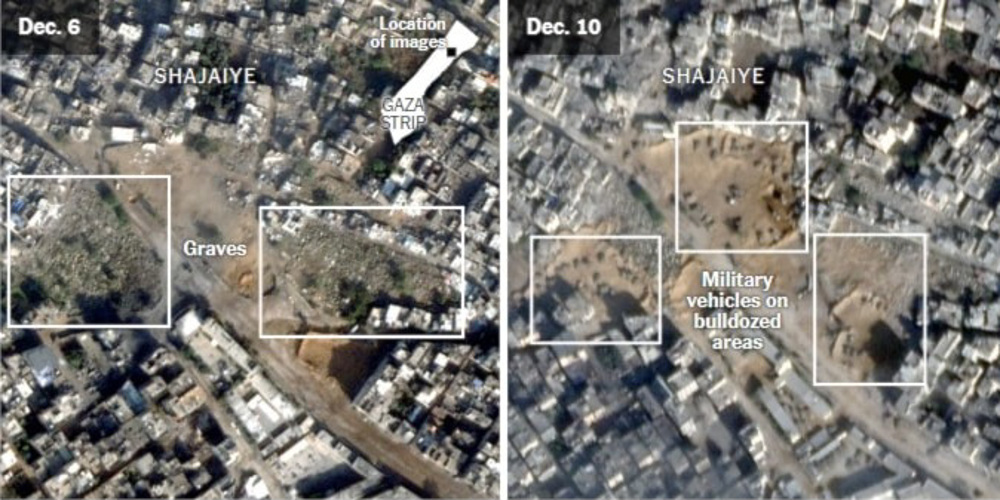
One of them, the al-Batsh cemetery next to al-Shifa Hospital, located in the neighborhood of northern Rimal in Gaza City, was subjected to complete leveling by Israeli military bulldozers and the majority of the bodies and tombstones were removed, dismembered and looted.
Euro-Med Monitor documented the same Israeli practice at the Ali bin Marwan cemetery in the east, the Beit Hanoun cemetery in the north, the Sheikh Radwan cemetery in the northwest, and the Sheikh Shaaban cemetery in the central-eastern part of the city.
The Geneva-based rights group reported that Israeli military personnel stormed a cemetery in the al-Tuffah neighborhood, not specifying whether it was the Ali bin Marwan cemetery or another one, and dug up more than a thousand graves, removing over 150 freshly buried bodies.
Witnesses confirmed the deliberate leveling and exhumation of bodies from graves at the Beit Hanoun cemetery, as well as the targeted destruction of graves at Sheikh Shaaban cemetery with Israeli military vehicles trampling over the dead bodies.
The Christian cemetery of St. Porphyrius Church was also devastated by the indiscriminate Israeli airstrikes, and similar acts of destruction and desecration were also recorded at the Sheikh Ijlin cemetery and in the Shujaiya neighborhood.
Satellite images reveal the scale of destruction of the Tunisian cemetery in Shujaiya, specifically excavations, parked armored vehicles and the use of the site as a temporary military set-up.
Other cemeteries across Gaza where similar cases of destruction and theft of dead bodies have been documented include the al-Shuhada cemetery in Beit Lahia, the al-Falluja cemetery in Jabalia, the Khan Yunis central cemetery, the al-Qassam cemetery in Nuseirat, the Bani Suheila and Bureij cemeteries.
Limited damage from waves of bombings and shelling was also reported at dozens of other cemeteries, which in some cases resulted in bodies buried in shallow graves due to emergency conditions coming to the surface.
Israeli systematic destruction of cemeteries and theft of dead bodies does not include a number of similar cases involving mass graves, estimated at more than 120 throughout the Gaza Strip.
At the beginning of this year, South Africa raised the Israeli destruction of Gaza cemeteries as part of its case at the Hague-based International Court of Justice (ICJ), arguing that the Israeli regime violated the 1948 Genocide Convention.
Euro-Med Monitor also emphasized that the regime has not spared even the dead in its genocidal war on Gazans, in flagrant violation of the principles of international humanitarian law and the rules of war about the protection of cemeteries during armed conflicts, including the Hague Conventions and the 1949 Geneva Conventions.
Disturbing testimonies
Palestinian testimonies to local and international media confirm that Israeli genocidal actions are not isolated cases nor misconduct of a handful of individuals, but the desecration of graves and the theft of Palestinian dead bodies is an organized phenomenon.
Speaking to Euro-Med Monitor, a Gaza City resident described his and his family's shock when they learned that the body of his buried 20-year-old brother had disappeared from the al-Batsh cemetery.
"The Israeli army not only killed my brother but also went so far as to deny my family any opportunity to visit his grave," he was quoted as saying by the human rights group.
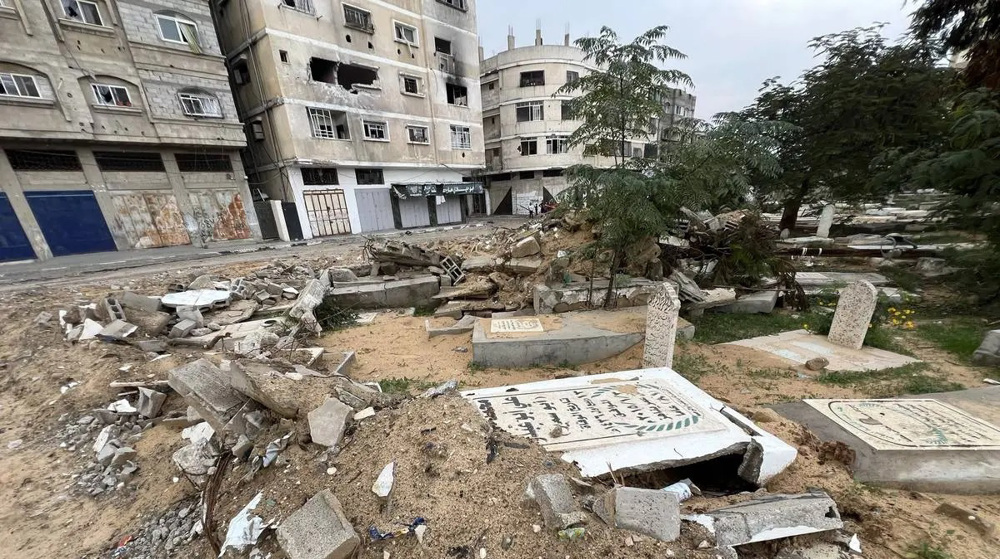
Another resident of Beit Hanoun testified that he and his fellow citizens saw the Israeli army digging up certain graves in the city cemetery and removing bodies and that due to the complete bulldozing, it became impossible to identify the remaining dead bodies.
Identical testimonies were given to Arab media months later by family members from Jabalia who, after the Israeli army withdrew, found an empty family grave in a cemetery near the Indonesian hospital.
They said the bodies of the recently deceased were stolen from multiple graves left open, and that eyewitnesses saw the Israeli theft covertly because soldiers have a habit of shooting at them.
Horrifying testimony also came from the Nuseirat refugee camp in November, where a woman revealed that after an Israeli incursion, she had found her sister's grave in the al-Qassam cemetery dug up and desecrated, with her head sticking out of the ground.
Equally disturbing are the testimonies of innumerable mass graves where the same Israeli acts of desecration and theft have been recorded.
In April, Palestinian Health Ministry spokesman Ashraf al-Qudra reported that dozens of bodies unearthed from the mass graves at Nasser Hospital in Khan Younis, southern Gaza Strip, were decapitated and had their organs and skins removed.
Paramedics and rescue teams who participated in recovering around 400 bodies of civilians from these mass graves reported that some bodies were mutilated with their stomachs open and stitched up, arguing that it was organ theft.
Israeli lame justifications
The Israeli regime's reactions to the aforementioned reports of cemetery destruction and body theft show that they have attempted to ignore, cover-up, or offer false justifications for their actions.
After the first published analysis of the cemeteries' destruction in December last year, journalists from the New York Times requested comment from the Israeli military but received no response.
New York Times, without deeper scrutiny, bought the lame argument as reflected in its reportage.
A month later, after a CNN investigation into the destruction of Palestinian cemeteries, the regime said they "had no choice" but to target cemeteries, falsely accusing the Gaza-based Hamas resistance movement of using them for military purposes.
They tried to justify the extensive digging of the Beit Hanoun cemetery near Khan Yunis city by claiming that there was a tunnel underneath with a Hamas command center.
CNN reporters were allowed a brief visit to the cemetery, after which they reported that despite their search, they were unable to find any tunnel entrance at that location and thus verify the Israeli claims.
The Israeli army took their reporter through an off-perimeter tunnel to an underground shelter they claimed was located under a cemetery, which CNN also questioned.
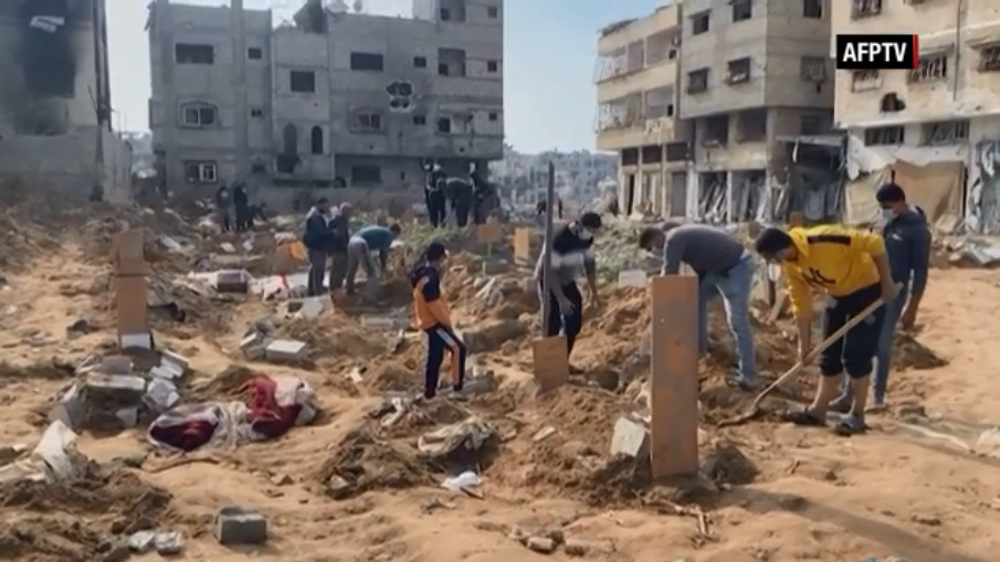
For exhuming the bodies, the Tel Aviv regime offered excuses that they were looking for the bodies of Israeli prisoners and that the digging was necessary to identify the tunnel, evidence.
CNN also pointed out that an Israeli military spokesman did not provide any explanation as to why the cemeteries were leveled and used for military outposts or parking lots.
However, like the New York Times, CNN continued to peddle the Israeli narratives and whitewash its crimes against Palestinians, which is evident from its reportage on the ongoing genocide.
For propaganda purposes, the regime's military social media channels posted a photo of an Israeli flag on the grave of a Jewish soldier and a tank standing on the edge of the cemetery, to give the impression that they respect the dead.
The place was a military cemetery with soldiers from the world wars, the only undamaged cemetery in the conflict, taken care of by the Hamas authorities for years.
Official 'necroviolence' policy
Israeli desecration of cemeteries and corpses amid the ongoing genocide in Gaza is not new but is part of a decades-long practice and 'necroviolence' policies adopted by the apartheid regime.
For Palestinians, cemeteries are sacred spaces that are not only a place to bury and mourn the dead, but also an everlasting record of generational and geographic history and belonging.
As such, they are a favorite target of the Zionist colonialist project which, along with territorial grabs, seeks to erase their current presence and historical trace in these areas.
Culturicidal cemetery vandalism by Israeli settlers and occupation forces is routine across the occupied Palestinian territories, and it has been documented countless times over the years.
At the same time, Israeli regime authorities frequently issue orders to destroy Palestinian graves, leaving demolition notices and asking the families of the deceased to remove the remains and tombstones themselves.
Even centuries-old burial sites have not been spared from these official policies, as evidenced by the cases of the Mamilla, Bab al-Rahma and Bab al-Asbat cemeteries in occupied Jerusalem al-Quds.

The Mamilla cemetery, which dates back to ancient and early Islamic times and contains the graves of prominent Muslim and Christian figures, was the most important and largest Islamic cemetery in the city for over a thousand years.
In 1964, under Israeli occupation, the north of the cemetery was covered with a parking lot, and in 2004, the Zionist organization Simon Wiesenthal Center, led by settlers from the occupied West Bank, announced the construction of a museum there.
Numerous Arab, Muslim and international organizations protested against the construction of the museum, ironically named the Museum of Tolerance, and filed an appeal to the Supreme Court, which in 2011 ruled in favor of the settlers and the construction.
During the legal process, urgent construction on the site continued and excavation crews removed approximately 1000 skeletal remains from destroyed historical tombs.
A similar fate befell the old Bab al-Asbat and Bab al-Rahma cemeteries with the graves of the companions of the Prophet Muhammad (PBUH), located along the eastern wall of the Al-Aqsa Mosque, where the Israeli authorities in 2011 decided to build a public park.
Despite its exceptional historical and present significance, the latter cemetery is not registered in the Burial Affairs Department in the "Ministry of Religious Services" but under the Nature and Parks Authority, pointing to a lack of acknowledgment that Palestinian cemeteries are sacred sites of burial.
Israeli apartheid policy of concealing burial sites dates back to the earliest days of the Zionist occupation, as evidenced by the mass grave of victims of the 1948 Tantura massacre, identified beneath a beachside parking lot.
Regardless of calls by historians, activists, and Palestinian authorities for many years to excavate the site, determine the number of victims and mark it, Israeli authorities have not allowed this to happen.
Body theft policy
Israeli theft of dead Palestinian bodies as another form of 'necroviolence' has also existed for a long time and has been documented in investigations and scholarly articles many times.
For decades, Israel has kidnapped and confiscated hundreds of Palestinian corpses in clandestine gravesites, known as the cemeteries of numbers (maqaber al-arqam), for their shared characteristic of replacing each corpse's identity with a numbered marker as their anonymous identifier.
Around 300 Palestinian and Arab martyrs are still interred in these cemeteries, the majority of whom fell in battle during a period of organized armed resistance in the 1960s and 1970s.

While Israeli authorities denied the existence of the cemeteries of numbers for a long time, they were known to Palestinians, who learned of them primarily from eyewitness accounts of the revolutionary fighters who had returned from battle.
They indirectly acknowledged their existence in a special military report from the 1990s, during a rare legal case that sought to locate the remains of two Palestinian missing persons, revealing that bodies had been buried negligently in unmarked shallow mass graves under the pasture.
The Israeli practice of burying fallen Palestinians in undisclosed military zones without the consent or knowledge of their family is one of the ways the regime uses to control Palestinians through death.
By doing so, they deny them the right to information about whether a person is alive or dead, the right to a funeral, and the right to a tombstone, collectively punishing the entire family and leaving them in a permanent state of grief.
Palestinian rights groups and activists further argue that the practice is an attempt to discourage others from resistance activities and prevent potential riots at the emotive funerals.
It has also been recorded that Israeli regime authorities have used kidnapped dead bodies as ransom, such as in a 1995 case when the Israeli attorney's office responded to a Palestinian family's request to return the body of a martyr.
The regime conditioned the return of the body on the Palestinian authorities finding and handing over the corpse of an Israeli soldier killed in an unrelated operation.
Recent reports of Israeli exhumation of fresh graves in Gaza, experts say, represent a possible continuation of a policy of depriving the dignity and blackmailing the martyrs' families.
Statements by Palestinian health spokesman and medical personnel about the theft of organs are worthy of international investigation as well, given the high market price of organs and Israeli well-known past policy of unauthorized organ harvesting.
Although it has long been known to Palestinians, the world public was largely made aware of it by a Swedish article from 2009, describing how many young men from the occupied Palestinian territories had been seized by Israeli forces and their bodies returned to their families with organs missing.
The Israeli regime did not respond positively to international calls for an investigation, but instead, together with American officials, pressured Swedish authorities and journalists to distance themselves from the article, accusing them of anti-Semitism.
Following reports by medical professionals in Gaza who examined some bodies, Euro-Med Monitor has called for the creation of an independent international investigation committee into organ theft.
Medical professionals reportedly found vital organs, such as livers, kidneys and hearts were missing, which the rights group described as evidence of potential organ theft.
According to reports, the bodies stolen from unmarked graves in the occupied Palestinian territories are also used for research purposes in various medical universities managed by the Tel Aviv regime, without permission of families or Palestinian authorities.
Ex-Israeli spies involved in Gaza genocide building AI systems for global tech companies
Biden: Netanyahu used US bombing of Berlin as justification for Gaza genocide
Leader favors expansion of interaction between Iran, Russia: Pezeshkian
VIDEO | Press TV's news headlines
UN chief says Israel must end occupation of south Lebanon
VIDEO | Iranians celebrate Gaza ceasefire in Tehran
VIDEO | Israel funds settler farms in West Bank
Russia expects no major change in US sanctions policy under Trump



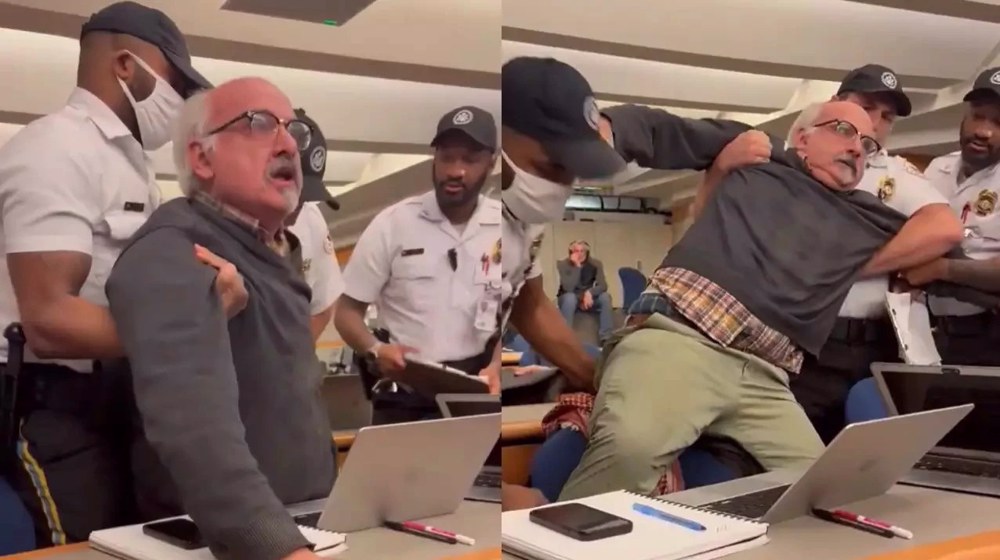
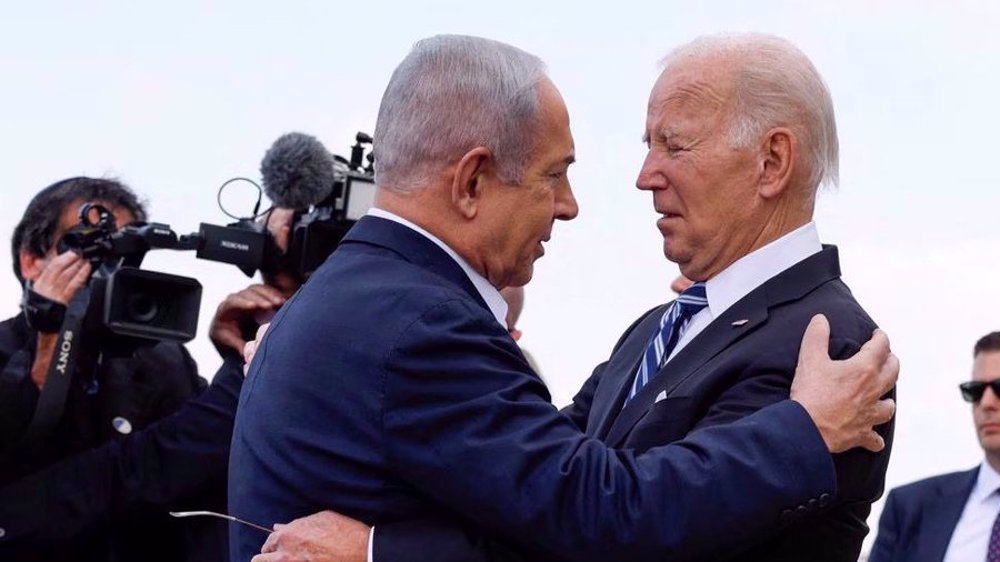
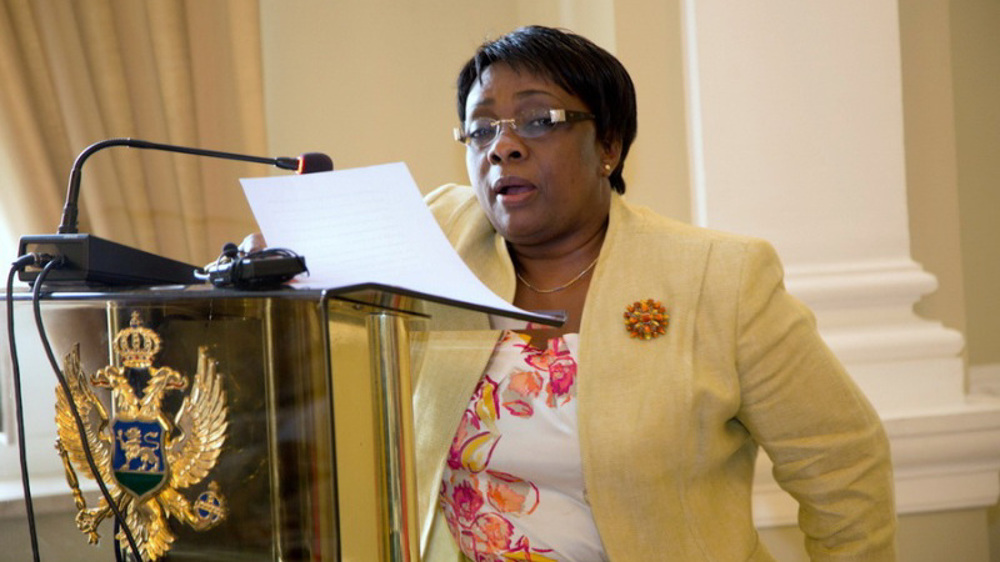



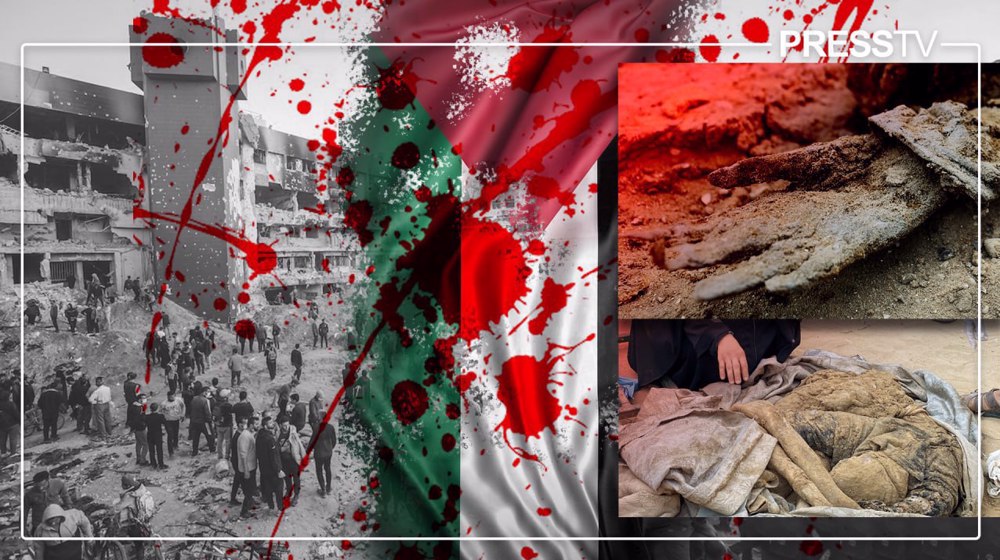
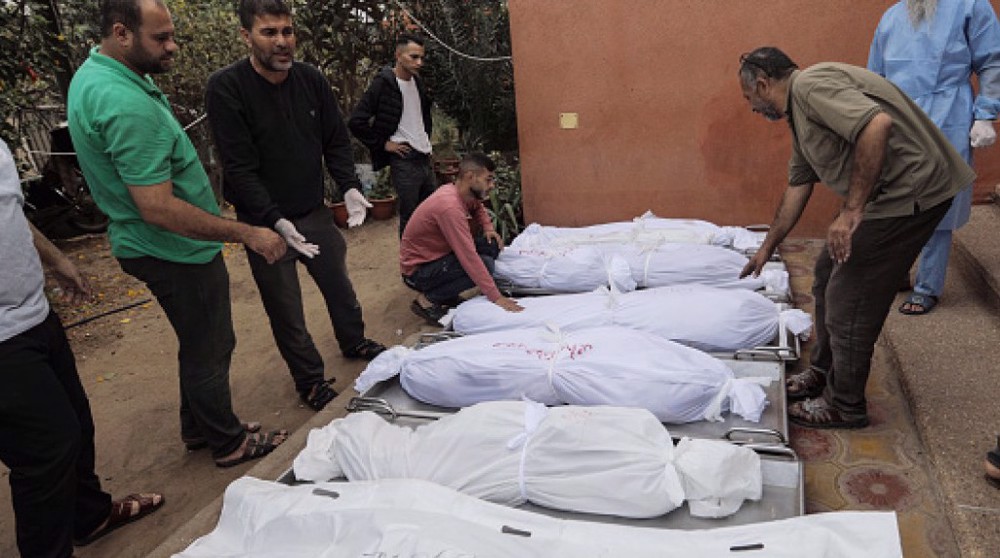

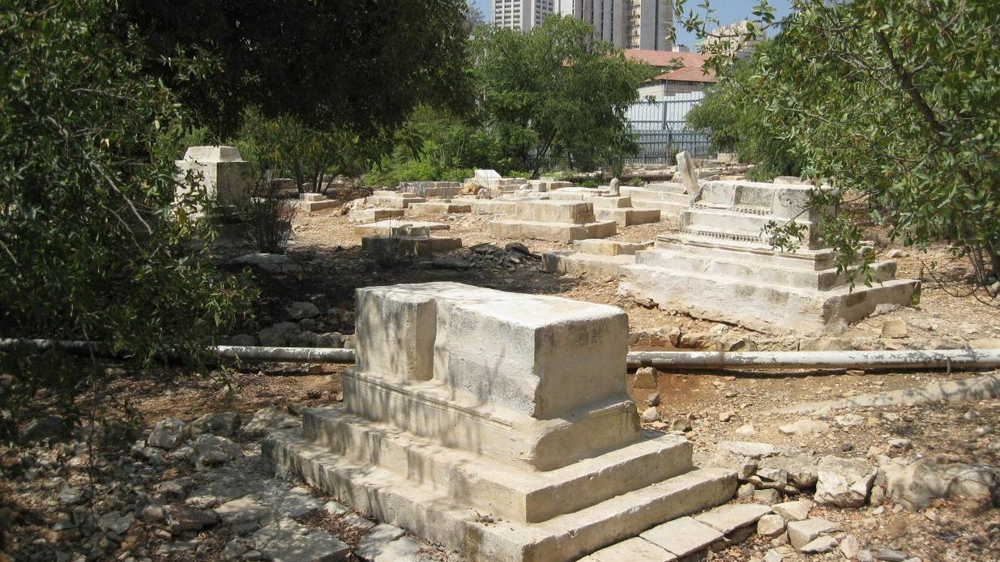
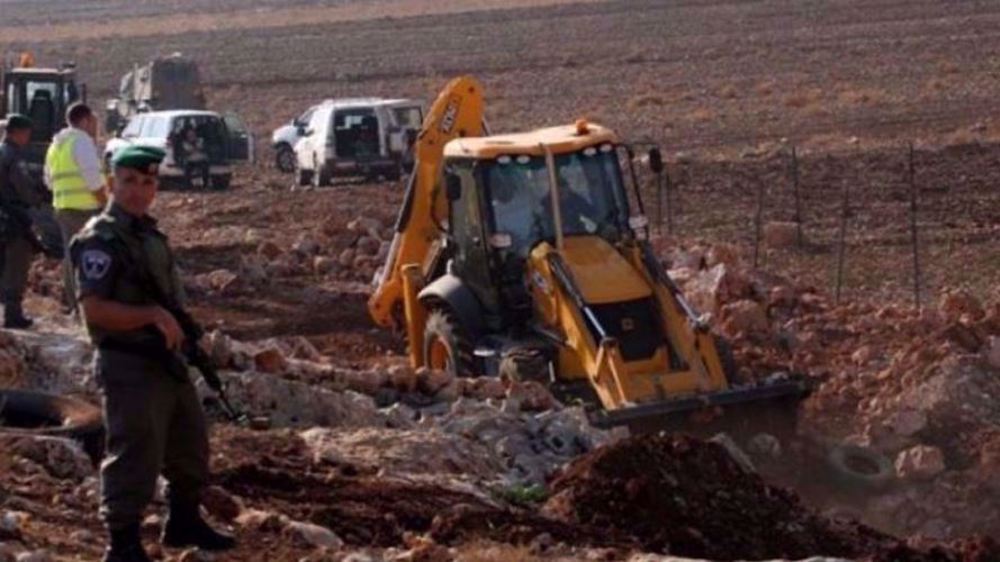

 This makes it easy to access the Press TV website
This makes it easy to access the Press TV website